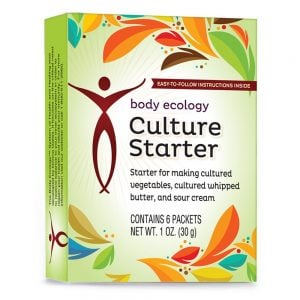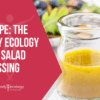2 Cruciferous Vegetables Make It Possible to Absorb Vitamin D
We are not so much what we eat but what we absorb.
We may eat foods that are rich in vitamin D, like cod liver oil, shellfish, and seafood, or spend a moderate amount of time in the sun, but this doesn’t mean we absorb and use the vitamin D that we consume.
Our cells must first receive vitamin D in order for it to be biologically active in the body. The way that cells receive vitamin D is through the vitamin D receptor.
A specific gene called the VDR (vitamin D receptor) gene codes for this receptor.
Unfortunately, sick and unhealthy cells express less of the VDR gene, meaning that they are unable to accept and use vitamin D. Supplementing with more vitamin D won’t help these sick cells. Without a receptor site, vitamin D has nowhere to go.
Why Your Body Needs Vitamin D

Broccoli and cabbage contain a special molecule that helps your body absorb vitamin D. Raw cruciferous vegetables are even more beneficial when they’re easy to digest — ferment your veggies with the Veggie Culture Starter.
Many of us associate vitamin D with strong bones and healthy teeth.
Indeed, vitamin D is a fat-soluble vitamin that promotes the use of calcium and helps bones grow. Vitamin D also encourages immune cells to mature, bolstering the immune system and keeping infectious bacteria in check. (1)
Researchers have found receptor sites for vitamin D on the surface of intestinal cells. (2) This tells us that vitamin D is essential for intestinal health. We also know that vitamin D controls inflammation and autoimmune flare-ups. (3)
Mutations in the VDR gene—which limit the body’s ability to absorb vitamin D—are associated with Crohn’s disease, an autoimmune and inflammatory disorder that affects the intestinal tract. (4)
Vitamin D also protects against the development of cancer. (5) Many genes that control cell growth and cell death are partially regulated by vitamin D. This helps to explain the pivotal role that vitamin D plays in the fight against cancer.
Besides cod liver oil, shellfish, and seafood, you can also find smaller amounts of vitamin D in liver and egg yolk.
The Magic Molecule in Broccoli and Cabbage
Broccoli and cabbage contain a very special molecule called sulforaphane.
Research shows that sulforaphane increases the expression of the VDR gene.(6)
In other words, the sulforaphane that we find in cruciferous vegetables and herbs like wasabi helps the body absorb more vitamin D—improving bone mass, as well as the ability to fight infection, cancer, and inflammation.
Sulforaphane is made when cruciferous vegetables and roots release an enzyme called myrosinase. This happened when we tear, cut, or chew cruciferous plants. The activated enzyme creates sulforaphane. Broccoli and cauliflower sprouts are an especially good source of sulforaphane. (7)
Other edible cruciferous plants include:
- Arugula
- Bok choy
- Brussels sprouts
- Cauliflower
- Collard greens
- Horseradish
- Kale
- Mizuna
- Mustard greens
- Wasabi
- Watercress
How to Eat Cruciferous Vegetables
The magic molecule sulforaphane is one reason why Body Ecology places so much emphasis on non-starchy cruciferous vegetables. But just because these veggies are good for you does not mean they are always easy to digest—especially when you’re on the very first stage of the Body Ecology Diet.
If you have cramping intestinal pain, bloating, or gas after munching on raw cabbage, this is a sign that you cannot tolerate raw, unfermented cruciferous vegetables. You see, raw cruciferous vegetables contain complex sugars called oligosaccharides. These complex sugars feed bacteria living inside the digestive tract, sometimes making cruciferous veggies difficult to digest.
In this case, we recommend getting all the benefits of raw cruciferous vegetables by culturing them with our Veggie Culture Starter and EcoBloom prebiotic.
Cultured vegetables are pre-digested by probiotic bacteria and yeast. They are easy to digest and full of active enzymes to heal a wounded inner ecosystem.
What To Remember Most About This Article:
Even with a healthy diet, absorption is what really matters. You can eat vitamin D-rich foods and spend a moderate amount of time in the sun, but your body may not absorb vitamin D efficiently.
Cells receive vitamin D through the vitamin D receptor; the VDR gene codes for this receptor. Sick and unhealthy cells may express less of the VDR gene so that they are not able to accept and use vitamin D. Taking an extra vitamin D supplement won’t help—absorption is the problem.
Broccoli and cabbage are two cruciferous vegetables that contain a special molecule called sulforaphane. According to research, sulforaphane increases VDR gene expression. Sulforaphane found in cruciferous vegetables and herbs like wasabi can improve vitamin D absorption to increase bone mass, boost immunity, and fight off inflammation, infection, and cancer.
You can get the most out of your cruciferous vegetables by culturing them with our Veggie Culture Starter and EcoBloom prebiotic. Pre-digested cultured vegetables are chock-full of active enzymes, making them easier to digest.
- [product id=”1″]
- [product id=”2″]
- [product id=”16″]
REFERENCES:
- Pludowski, P., Holick, M. F., Pilz, S., Wagner, C. L., Hollis, B. W., Grant, W. B., … & Soni, M. (2013). Vitamin D effects on musculoskeletal health, immunity, autoimmunity, cardiovascular disease, cancer, fertility, pregnancy, dementia and mortality—a review of recent evidence. Autoimmunity reviews, 12(10), 976-989.
- Schwab, M., Reynders, V., Ulrich, S., Zahn, N., Stein, J., & Schröder, O. (2006). PPARγ is a key target of butyrate-induced caspase-3 activation in the colorectal cancer cell line Caco-2. Apoptosis, 11(10), 1801-1811.
- Manolagas, S. C., Hustmyer, F. G., & Yu, X. P. (1989). 1, 25-Dihydroxyvitamin D3 and the immune system. Experimental Biology and Medicine, 191(3), 238-245.
- Simmons, J. D., Mullighan, C., Welsh, K. I., & Jewell, D. P. (2000). Vitamin D receptor gene polymorphism: association with Crohn’s disease susceptibility. Gut, 47(2), 211-214.
- Lazzeroni, M., Serrano, D., Pilz, S., & Gandini, S. (2013). Vitamin D supplementation and cancer: review of randomized controlled trials. Anti-Cancer Agents in Medicinal Chemistry (Formerly Current Medicinal Chemistry-Anti-Cancer Agents), 13(1), 118-125.
- Shapiro, T. A., Fahey, J. W., Wade, K. L., Stephenson, K. K., & Talalay, P. (2001). Chemoprotective glucosinolates and isothiocyanates of broccoli sprouts metabolism and excretion in humans. Cancer Epidemiology Biomarkers & Prevention, 10(5), 501-508.
- Schwab, M., Reynders, V., Loitsch, S., Steinhilber, D., Schröder, O., & Stein, J. (2008). The dietary histone deacetylase inhibitor sulforaphane induces human β‐defensin‐2 in intestinal epithelial cells. Immunology, 125(2), 241-251.








